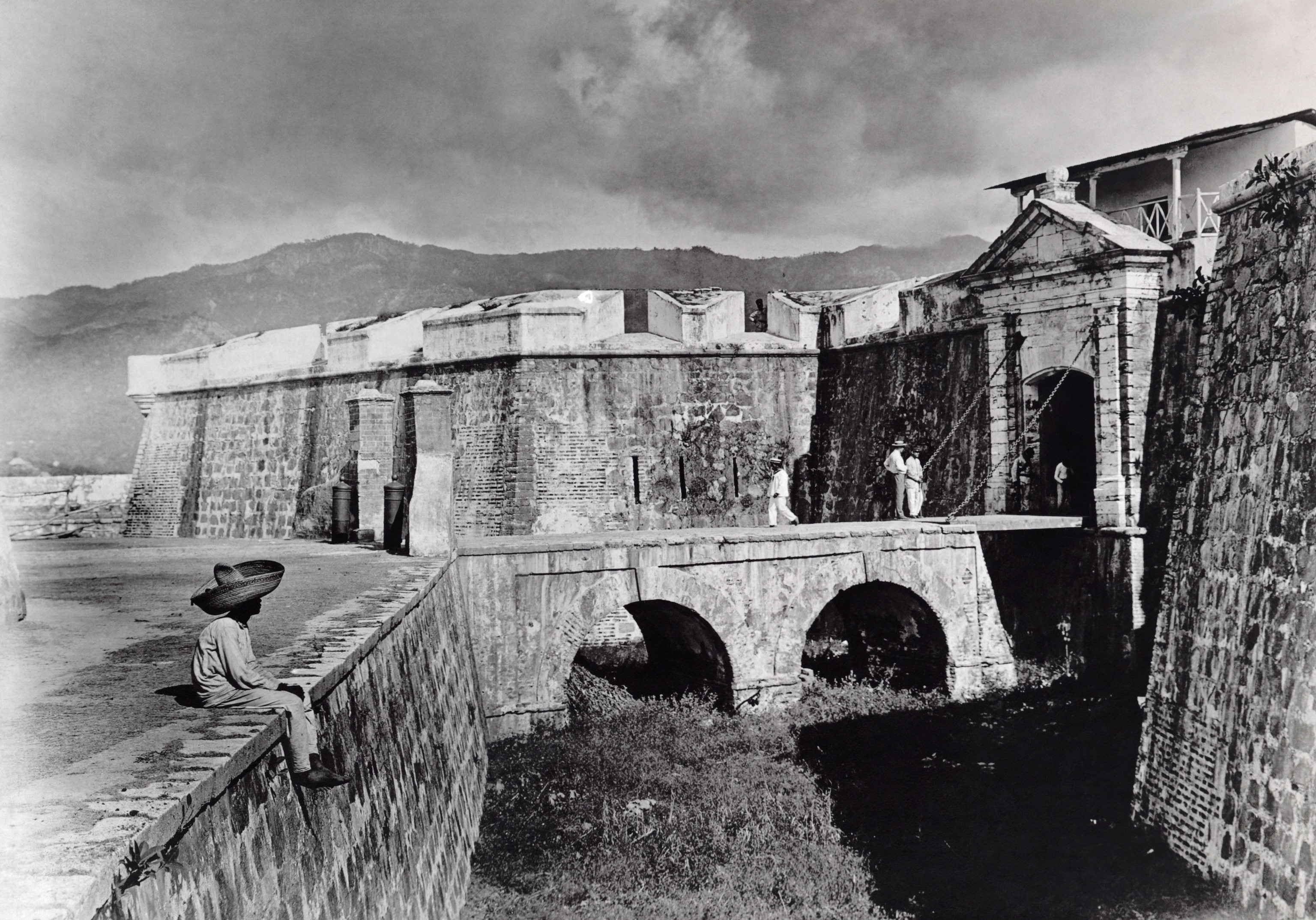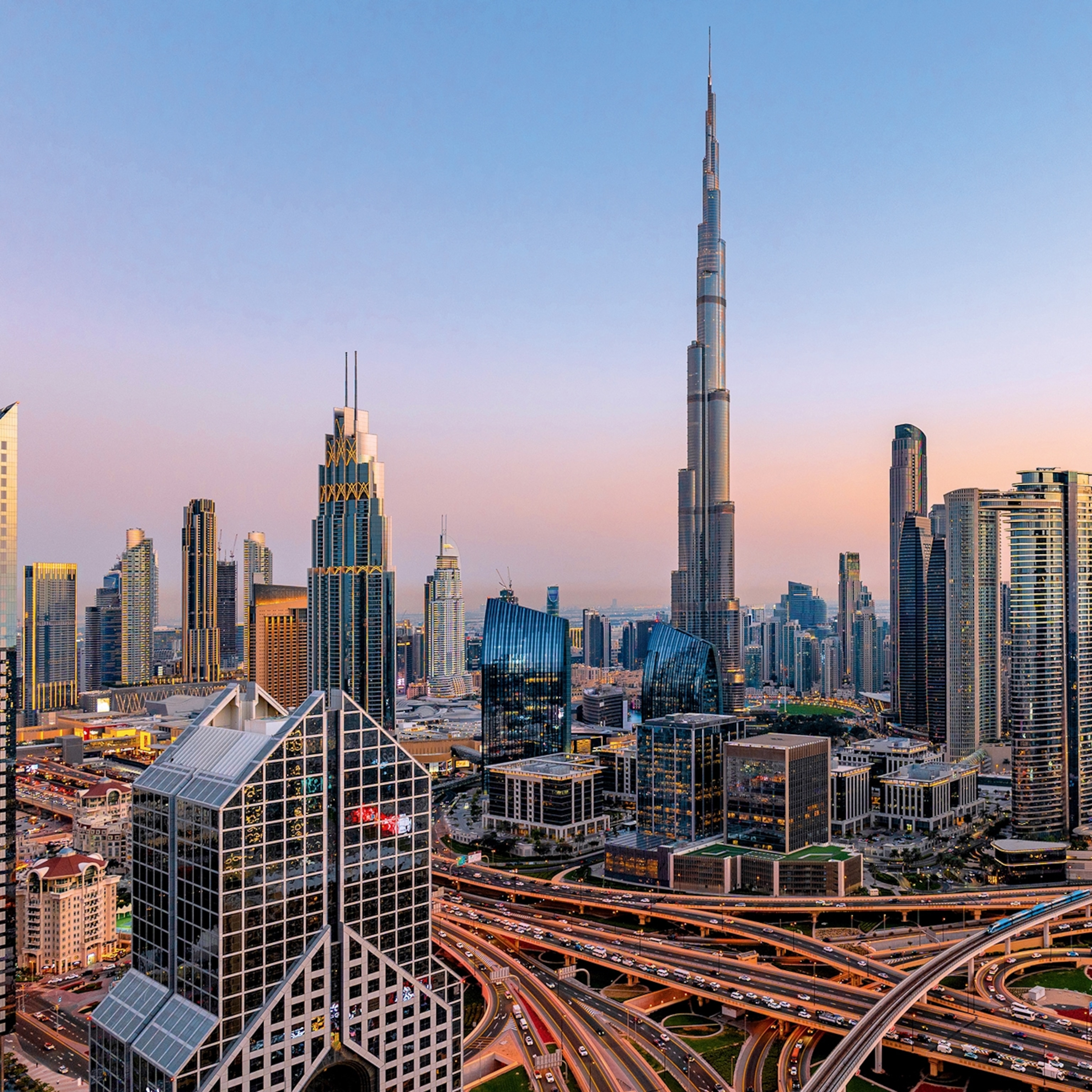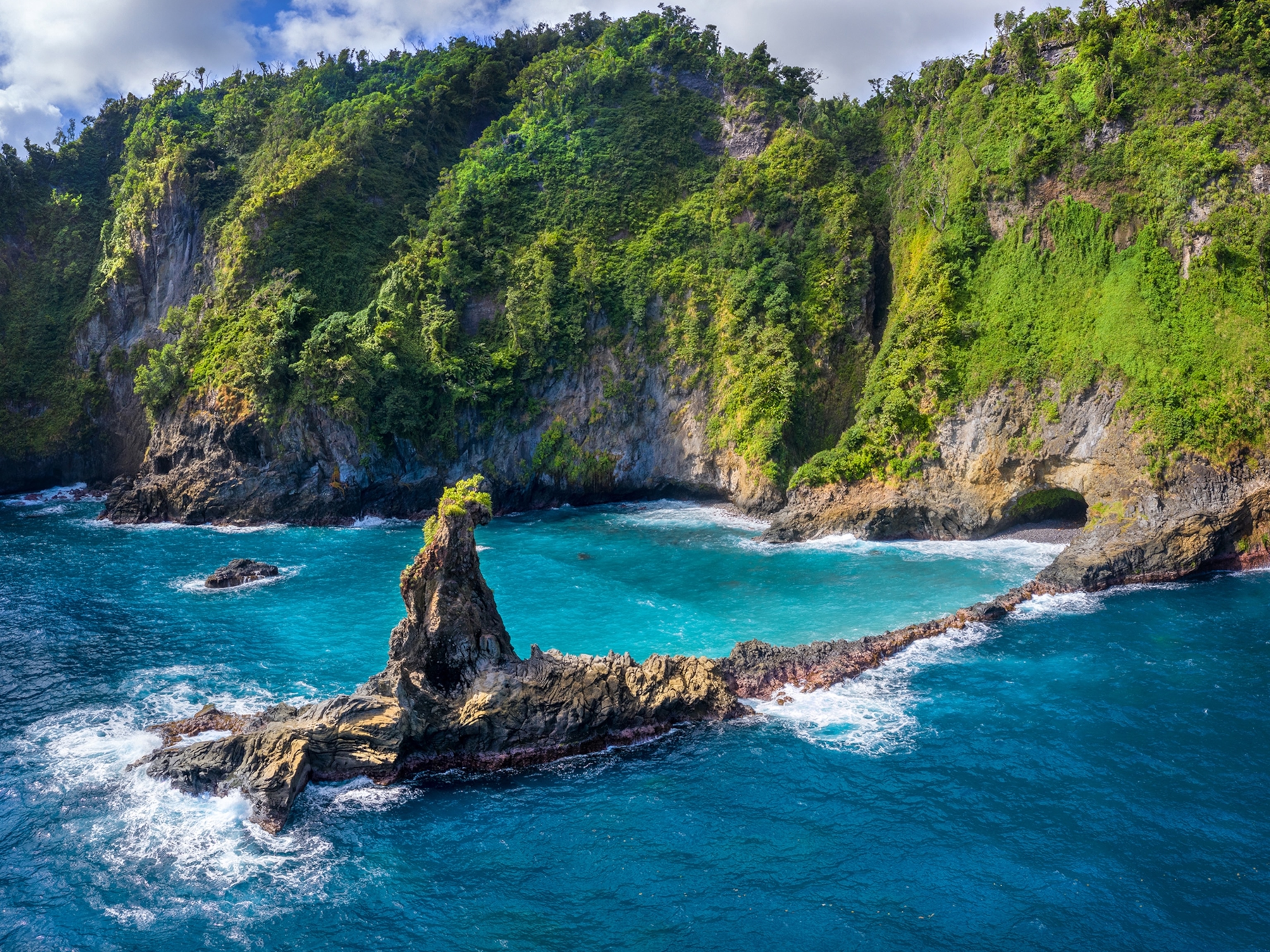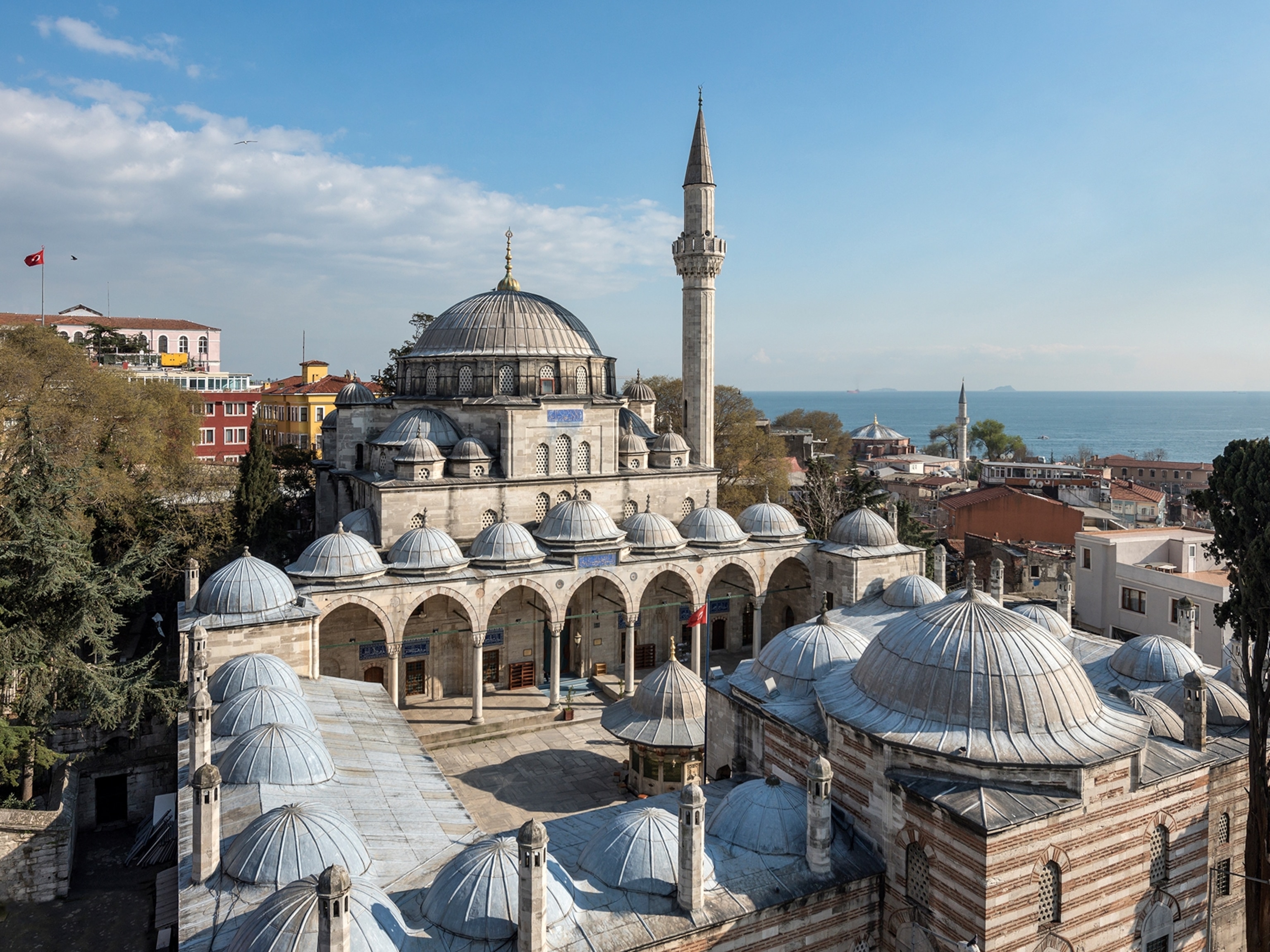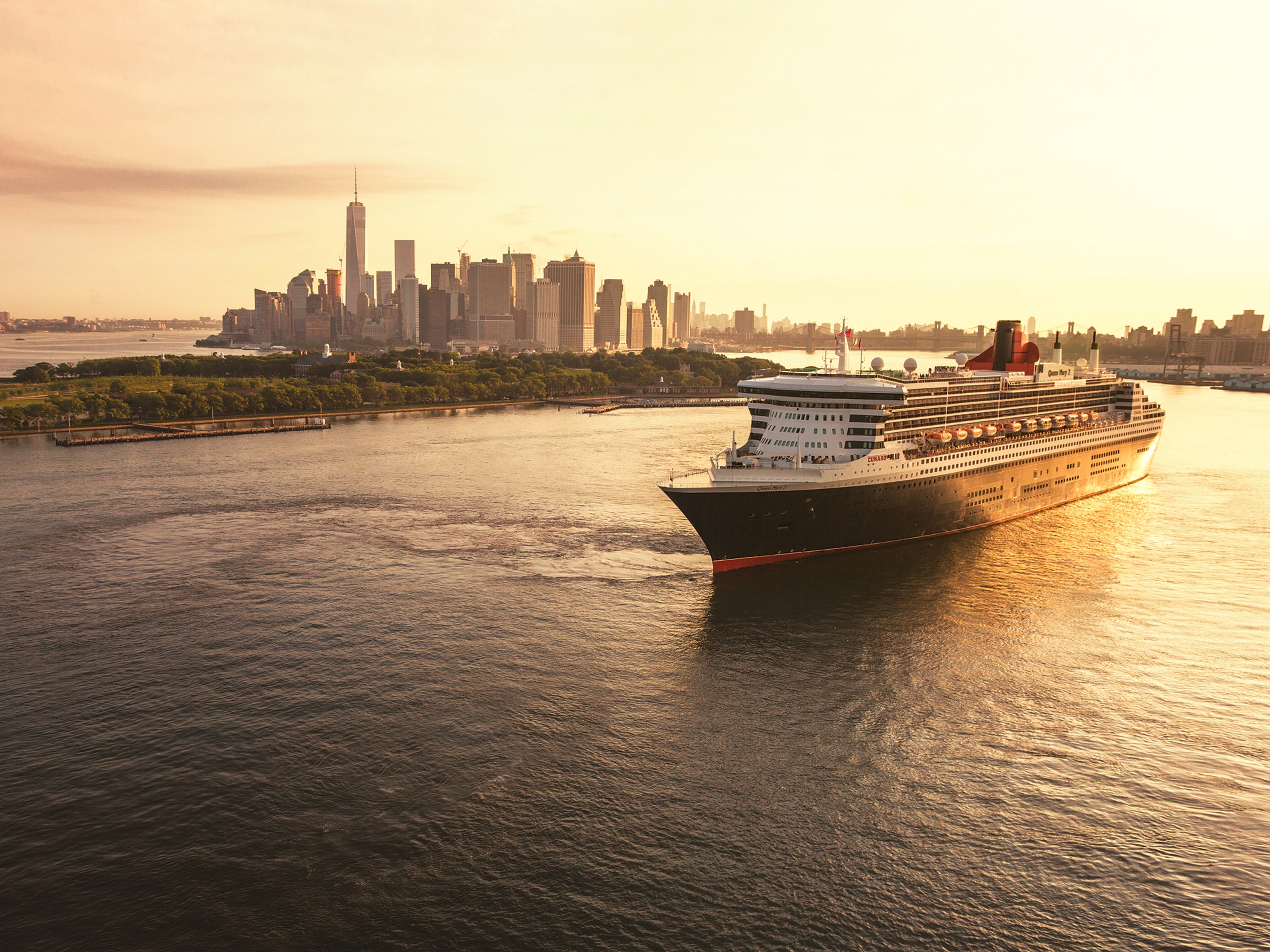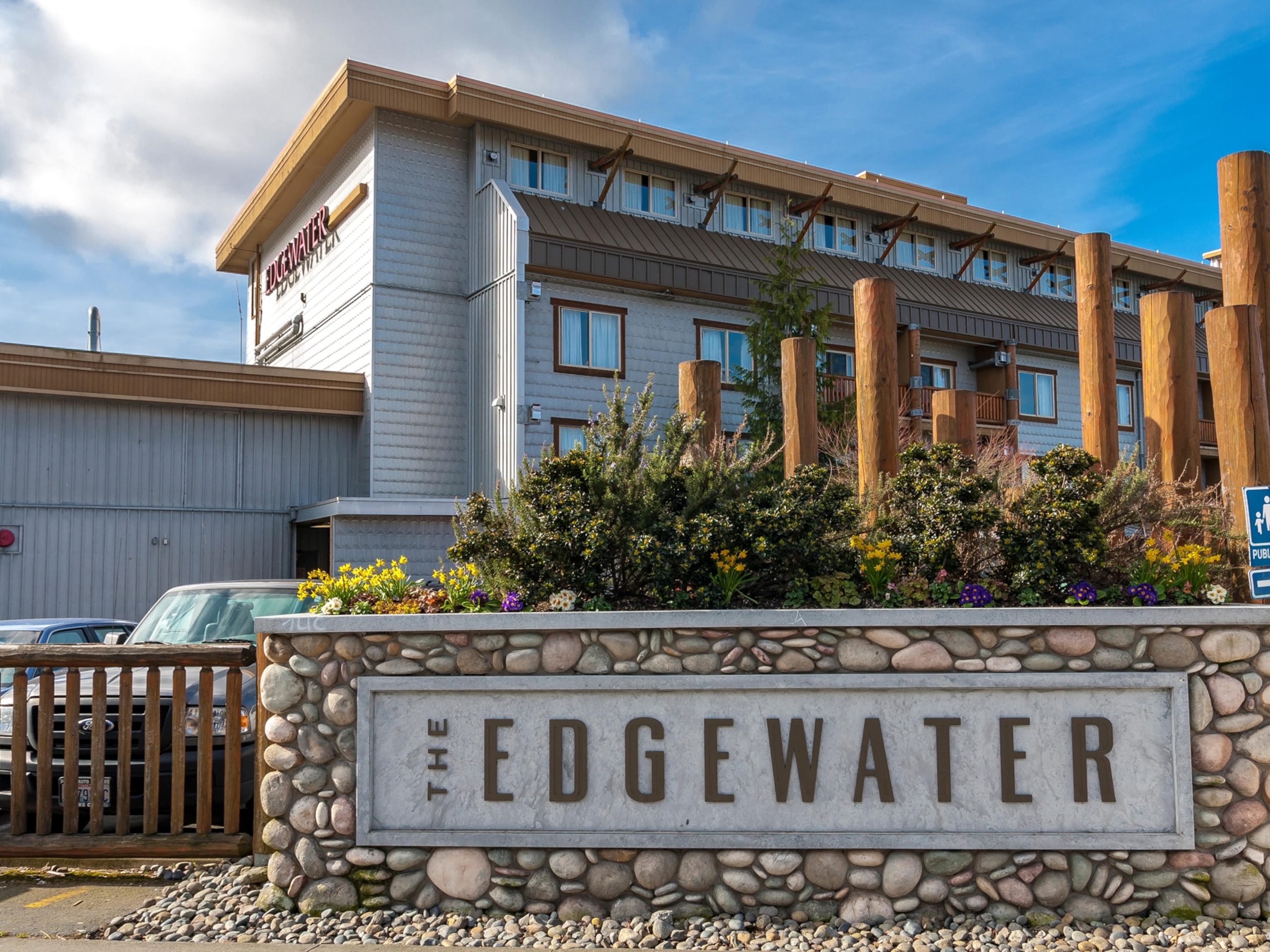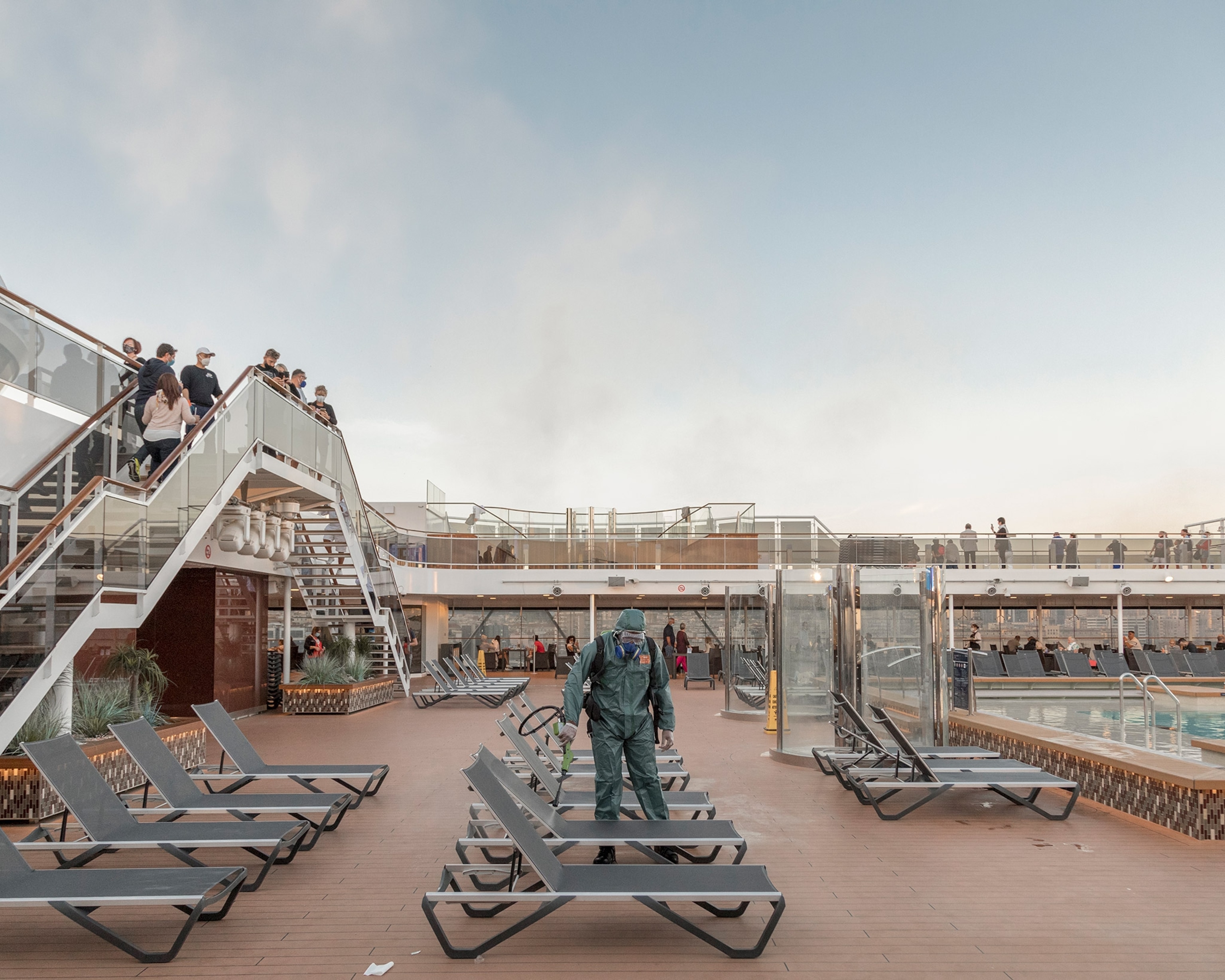
Why cruise ships are setting sail again as COVID-19 rages
The surreal world of cruising during a pandemic requires temperature checks at meals, pre-boarding virus tests, and masks on the dance floor.
When you take a cruise during a pandemic, daily activities look and feel quite different from pre-COVID-19 times. Breakfast is served at socially distanced tables after a pre-meal temperature check. At night, you can dance at a club, provided you cover your face and give other passengers a wide berth. The pool is open, kept clean by staffers in face shields and protective jumpsuits who also spray the lounge chairs with disinfectants.
Before March, a cruise ship worker in a hazmat suit would’ve seemed straight out of a high-seas horror movie. But for people traveling during a pandemic, like Victoria Balabaeva, such precautions seem assuring.
“It made me feel safe seeing how seriously the ship is taking health protocols,” said Balabaeva, who, in September, after months of lockdowns in her native Italy, joined 3,000 or so other passengers for an eight-day trip on MSC Cruises’ MSC Grandiosa. The ship set off from Genoa to destinations including Naples and Malta, one of the first sailings since the pandemic started.
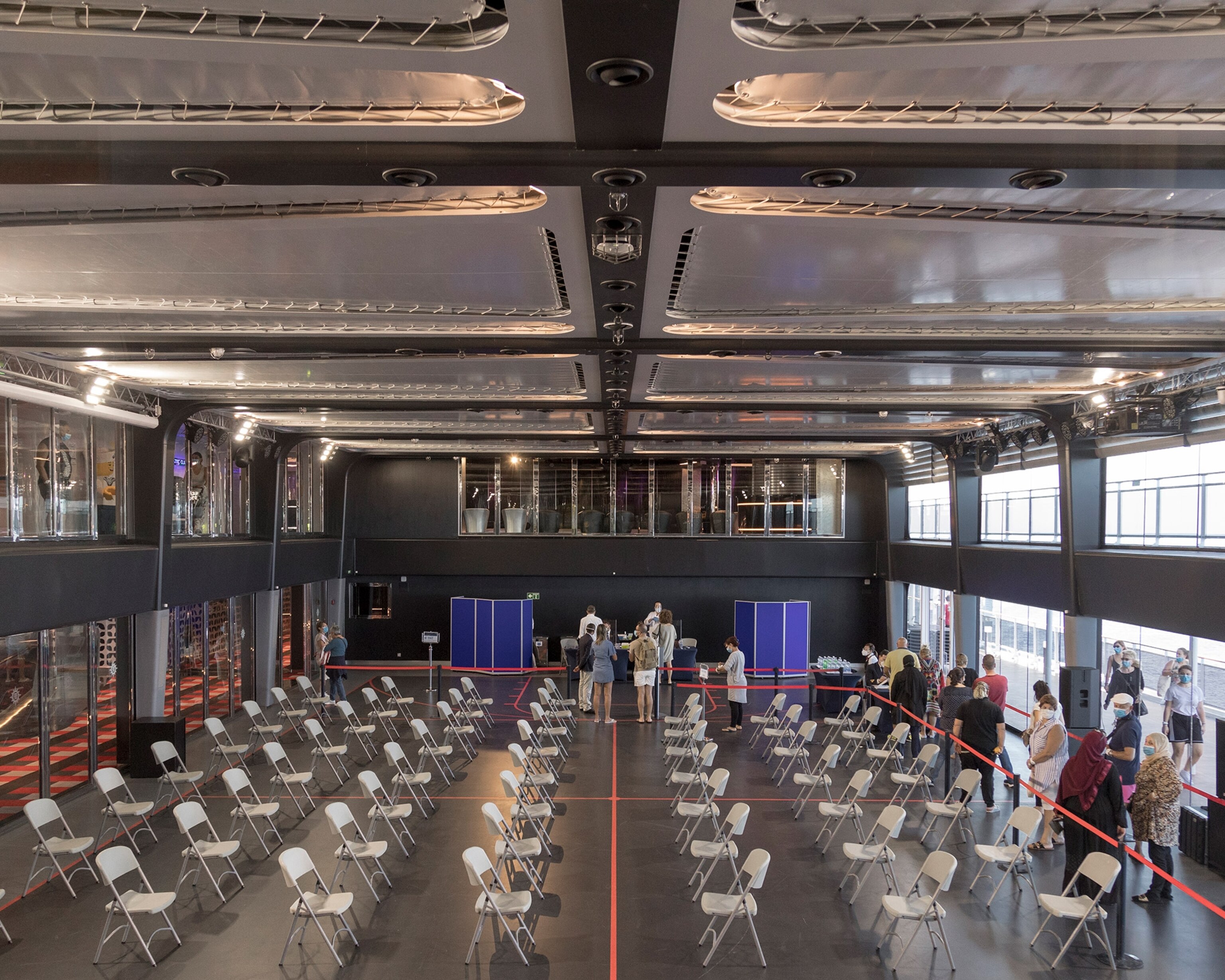
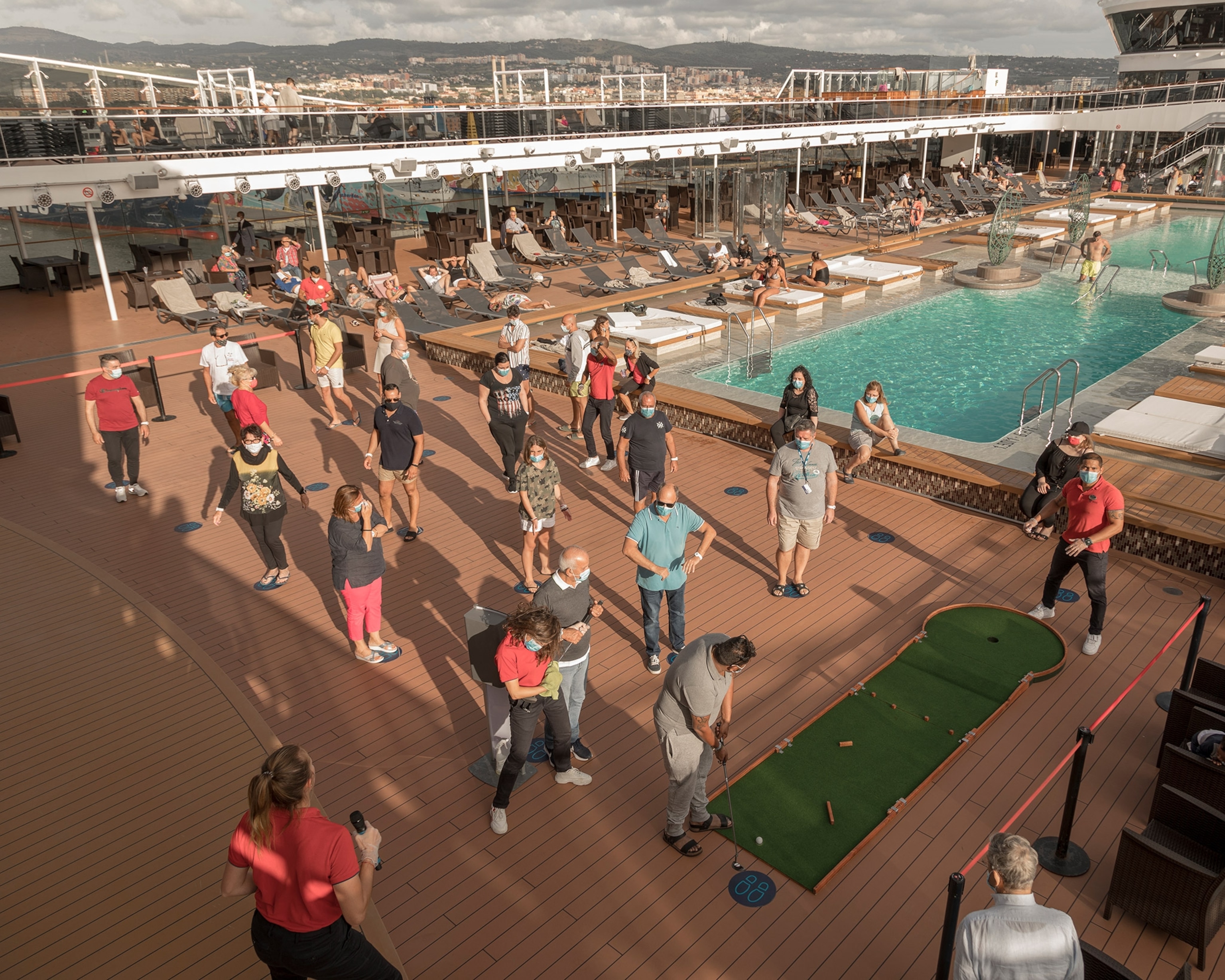
Cruise ships made headlines early in the year when they became floating coronavirus superspreader events, forcing crew and passengers to seek medical attention, evacuate, or quarantine, and leading to 3,689 cases and at least 41 reported dead in the U.S. alone.
Now, with new safety protocols and far fewer passengers on board, a handful of jumbo ships like MSC Grandiosa and Royal Caribbean International’s Quantum of the Seas have resumed sailing from European and Southeast Asian ports. How they’re doing it—and what passengers think—previews how the $150 billion industry might chart a recovery in 2021 and beyond.
The ships slowly come back
In late 2020, cruise ships still aren’t docking or taking off from United States ports. On November 22, the U.S. Centers for Disease Control and Prevention warned that “all people avoid travel on cruise ships, including river cruises, worldwide, because the risk of COVID-19 on cruise ships is very high.”
But in Europe and Asia, a few cruise lines resumed operations this summer. German-based Hapag-Lloyd Cruises was one of the first, sailing out of Hamburg starting in July. New safety precautions onboard included a mandatory health questionnaire, staggered boarding, daily temperature checks, and reducing its passenger load by 60 percent.
Before boarding, each guest—limited to residents of Germany, Austria, and Switzerland—had to provide proof of a negative COVID-19 test. The company also installed an onboard testing lab and hired doctors and nurses to travel with the ship. Cold fog machines that spew antiviral disinfectant were used to clean cabins and public areas. So far, after 30 completed trips carrying more than 4,000 guests, no COVID cases have been reported.
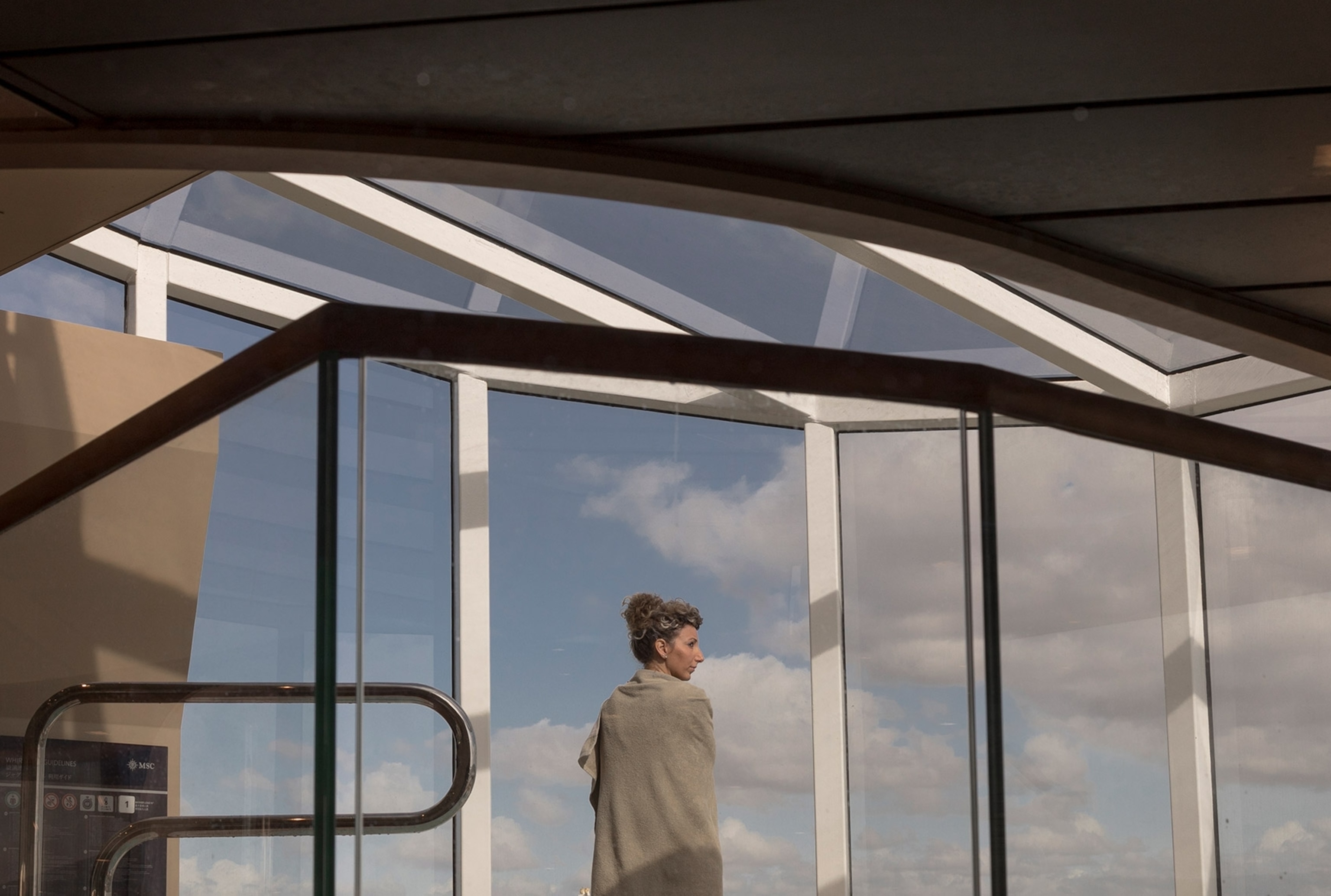
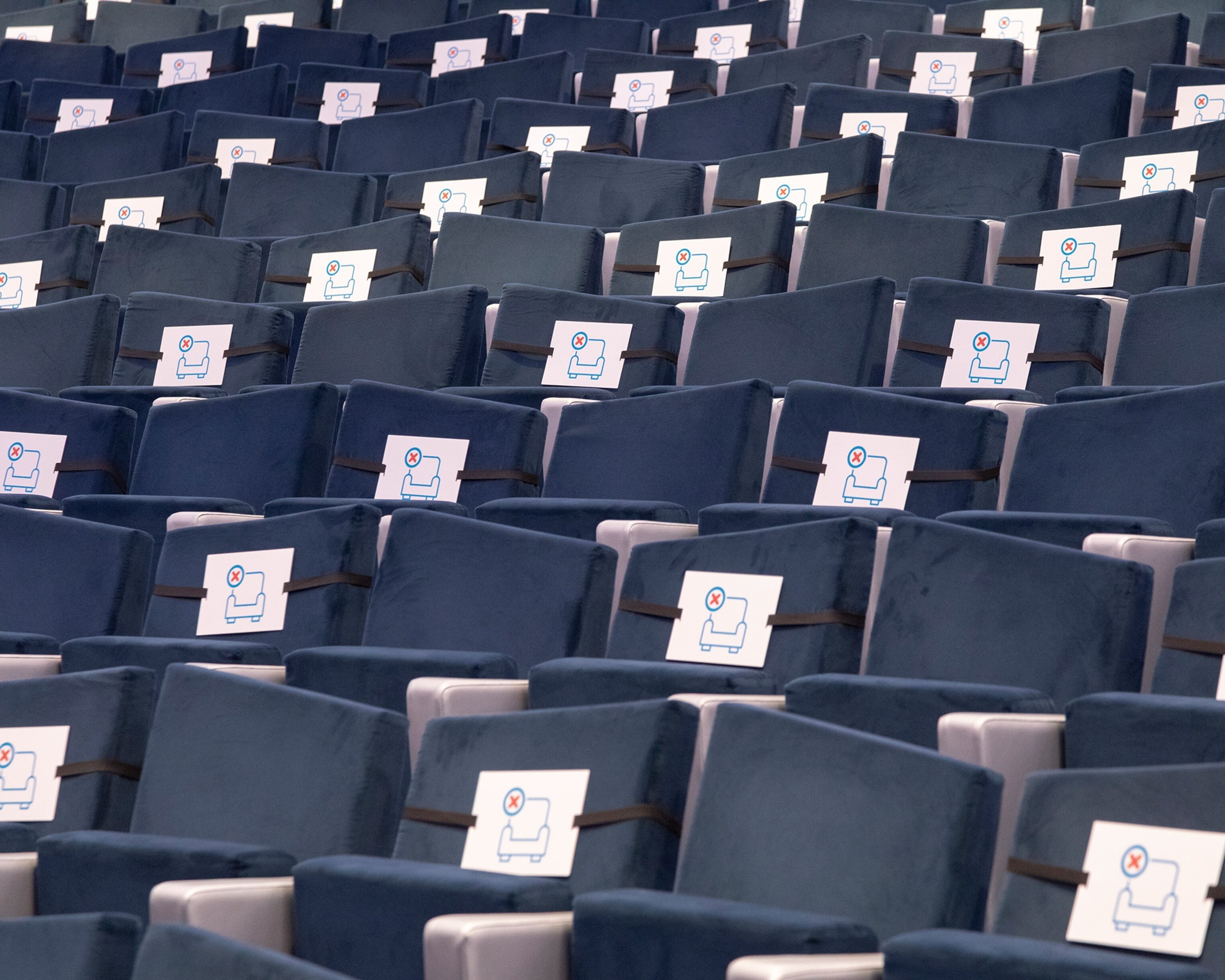
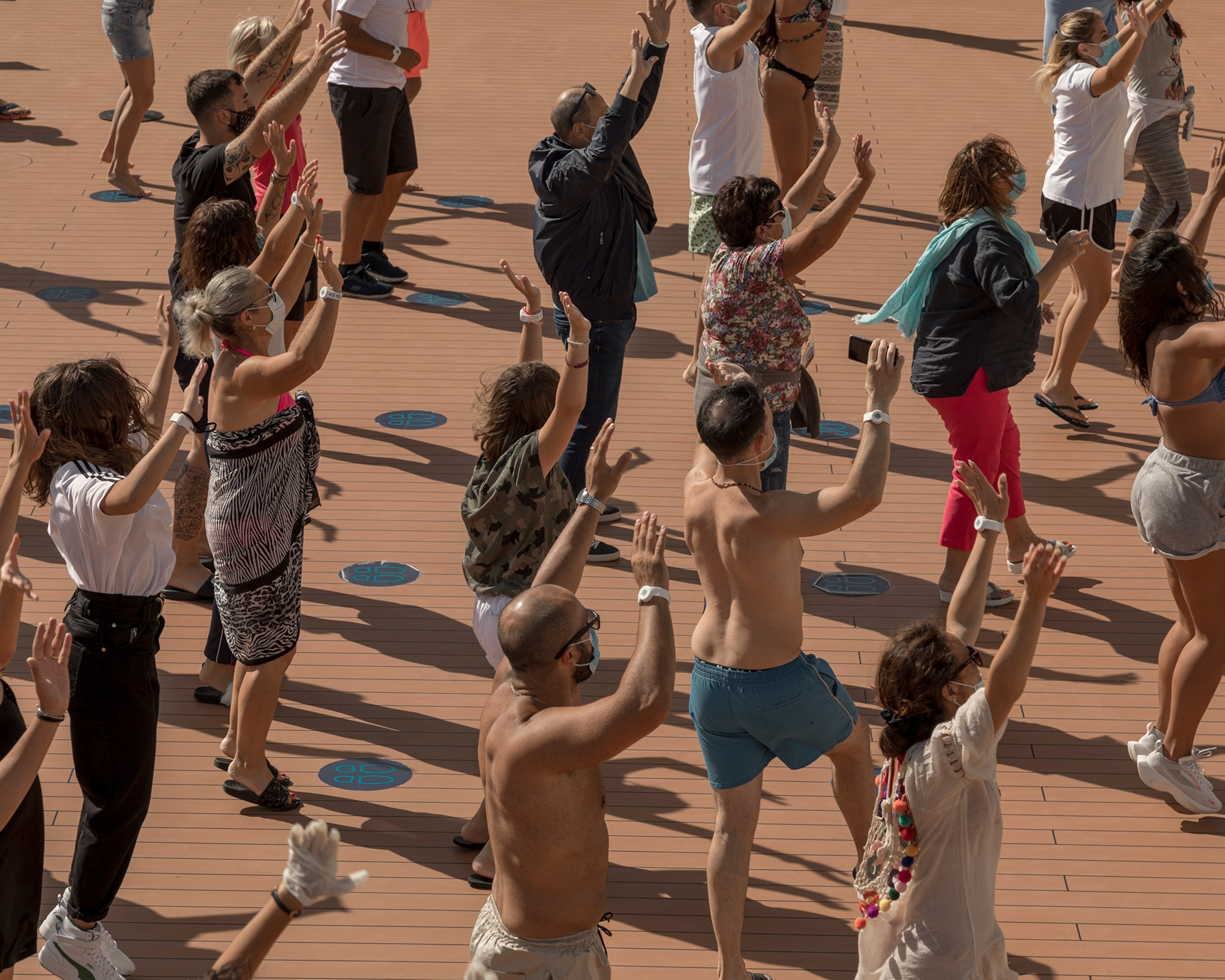
Finland’s Tallink Silja line resumed voyages in May and hasn’t had any known outbreaks. Though the company operated overnight cruises between Nordic countries before the pandemic; it’s currently offering only two-hour nature trips around the northern Baltic Sea region. It prepped for “new normal” voyages by installing handwashing stations, limiting ship capacity, and adding plexiglass shields to customer stations. Masks are recommended during boarding and disembarking.
(Related: How to stay healthier on a cruise ship.)
Other lines, including Royal Caribbean, MSC Cruises, and Dream Cruises, require temperature checks, a slate of COVID tests onboard, and timed reservations for pool and gym access. Buffet stations are no longer self-serve, and safety muster drills (training on evacuation protocols) are streamed on stateroom TVs instead of happening in person. Crew members are usually tested and quarantined prior to boarding the ship.
What it’s like onboard now
Rebecca Wong was one of 1,400 people who boarded Dream Cruises’ World Dream on November 6, the first ship to restart service from Singapore since spring. During the day, she scaled a rock-climbing wall, played miniature golf, and tried out archery. Special “safety ambassadors” milled around making sure people didn’t cluster in large groups and reminding them to wash their hands.
However, in the evenings, Wong missed the live entertainment, canceled for now on World Dream. “It felt a little strange not to have music and karaoke in the lounges,” she said. “It felt so empty.” Otherwise, she found cruising wasn’t starkly different from before the health crisis.
Balabaeva has been on more than 50 cruises, including 20 on MSC ships. The biggest difference she found was the lack of other people. “I almost had the whole ship to myself,” she said. One of the five largest ships in the world, MSC Grandiosa can accommodate more than 6,300 passengers. During the pandemic, it’s sailing at around 60 percent capacity.
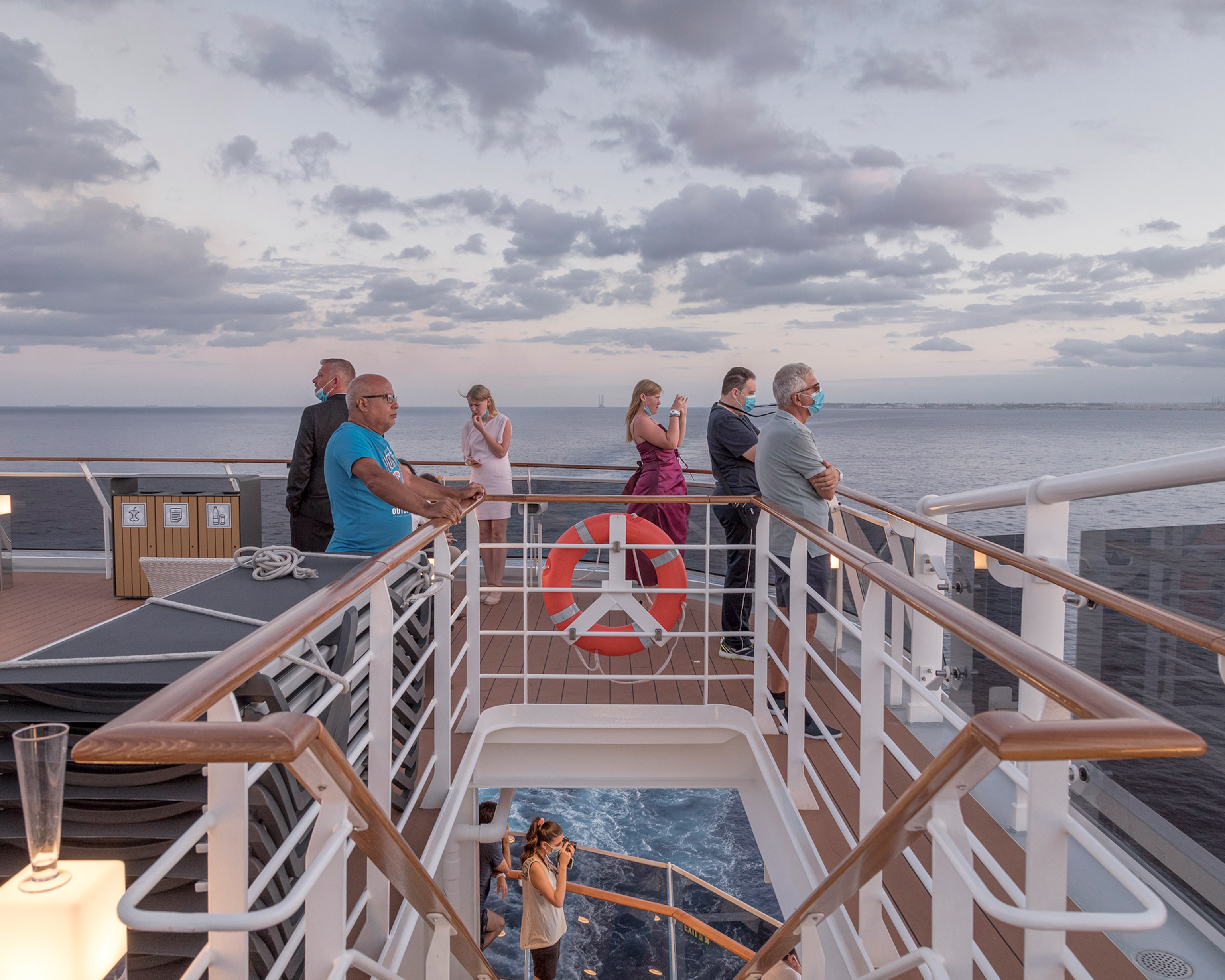
Seats in its massive auditorium are blocked off and dining tables are spaced out to allow for more social distancing. “People were doing the same things as before,” said Balabaeva. “Food and entertainment were still good, and we got more space onboard, so that’s a plus.”
Many of these new practices—like limiting capacity or restricting sailings to people from certain countries—are being implemented temporarily, and aren’t economically sustainable in the long term, said Chris Gray Faust, managing editor of online industry publication Cruise Critic. ”The current measures are a way to help get this industry back on its feet, while still delivering a safe and healthy experience,” she said.
After months of solitude in Milan, Italian photographer Davide Bertuccio was glad to be around other people on his inaugural trip aboard Grandiosa in October. “Being able to take a break and look at the immensity of the sea during this terrible year made me feel lucky,” he said.
However, he feared contracting the virus, so Bertuccio avoided talking and mingling closely with other guests. “Seeing people having to abide by the rules was the sad thing,” he said. “Objectively, this pandemic is making our normal something with an undertone of sadness. Nothing is the same as before.”
Balabaeva (who shares her cruising videos on YouTube) said she felt safer in some ways on the boat than she did at home in Turin. “Everyone had to pass a COVID-19 test before boarding,” she said. “That doesn’t happen on land, so you could meet a COVID-positive person that has never been tested pretty much in any public place. I’d rather wear a mask onboard and enjoy a sea breeze from my cabin balcony.” (Still, COVID-19’s long incubation period and the fact that rapid tests can be unreliable means a pre-boarding negative could turn into an on-deck positive.)
While she missed the usual cocktail gala and didn’t like the slowed-by-social-distancing buffet lines, Balabaeva enjoyed herself so much that she booked two more future cruises. She isn’t the only person eager to get back on the water: Cabins are selling out on ships that have resumed sailing in Europe and some parts of Southeast Asia.
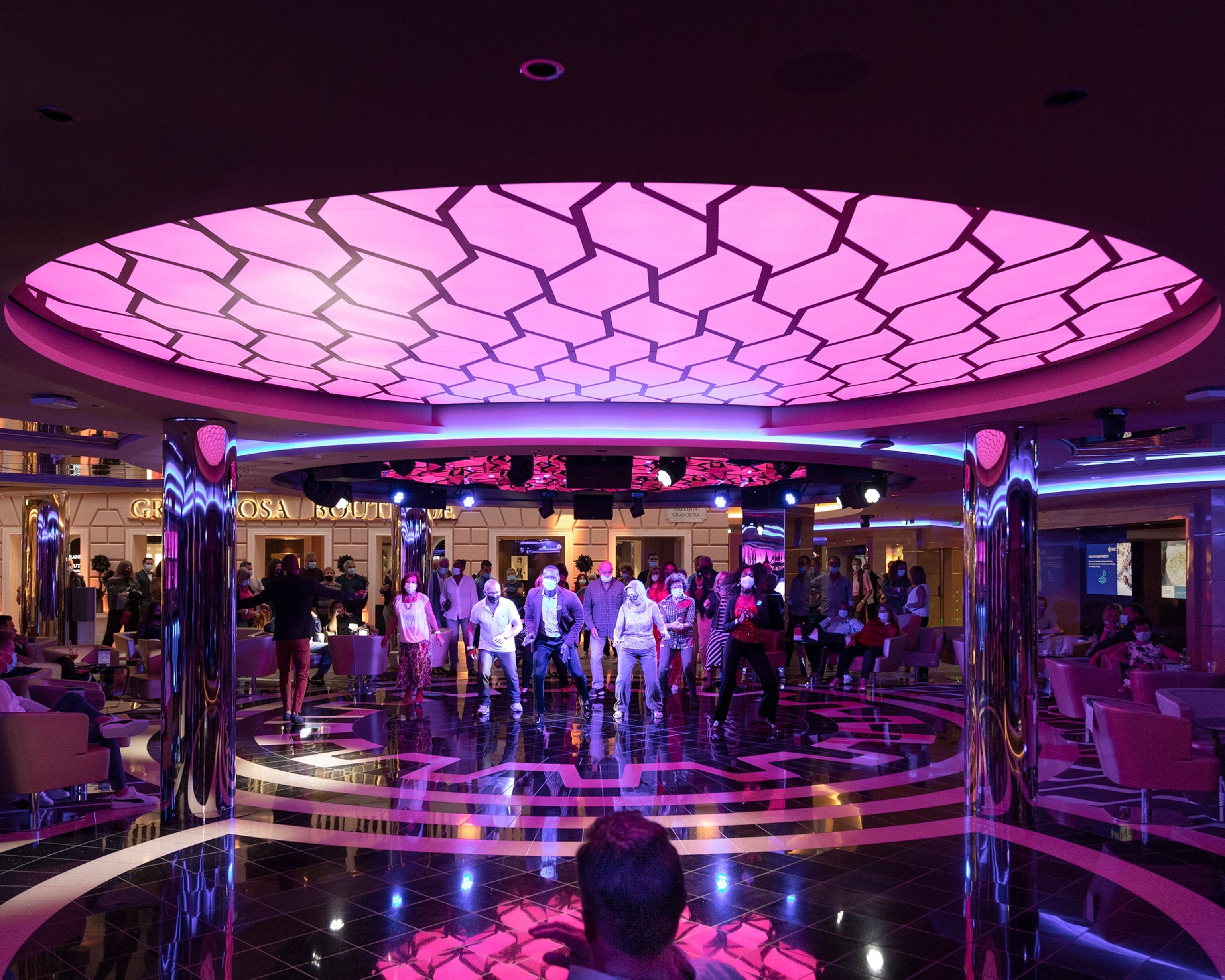
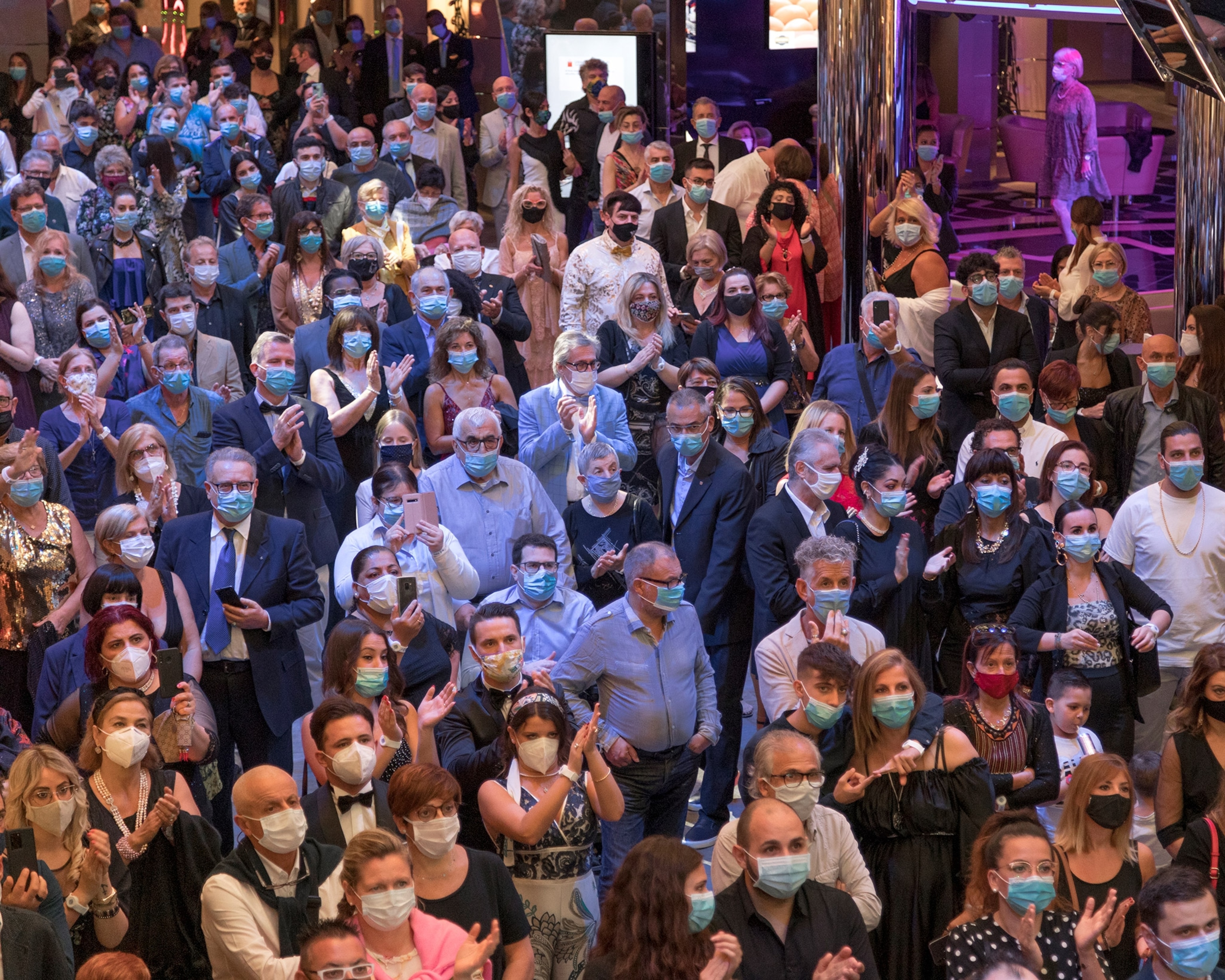
Port stops and shore excursions
Cruise lines claim they are creating social pods or bubbles by only allowing passengers and crew who have tested negative for COVID-19 aboard. However, once travelers disembark to explore any port cities along the route, they risk bursting those bubbles. To protect the health of guests and the local community, companies such as Royal Caribbean and Norwegian Cruise Line are stopping only at private islands (usually owned by the cruise lines) or forgoing ports completely on “cruises to nowhere.” (Note: Cruises to nowhere have been banned in the U.S. since 2016 due to complex immigration issues.)
Other cruise lines, such as MSC, attempt to make offshore excursions safer with sanitized, socially distanced transportation and guides who have tested negative for COVID-19. In some cases, passengers must take a rapid COVID-19 test and receive a negative result before coming back onboard.
“The ability to book an independent excursion or explore on your own is not currently an option for some European cruise lines,” said Gray Faust.
Passengers who leave the group tour might not be allowed back on the ship, said cruise expert Stewart Chiron, of The Cruise Guy, a booking and news platform.
Another potential complication when cruising during COVID-19? A country could implement a nationwide lockdown while a ship is part of the way through its itinerary. For example, MSC and Costa were both forced to retool Mediterranean routes when Greece went back into lockdown on November 5. France and Germany are also currently in a second wave of partial lockdowns.
“Navigating the various destinations that cruise ships visit is still a work in progress, and a significant focus of the lines at this time,” said Gray Faust. “So far, the lines sailing in Europe have done a great job, but it does require cruise lines and passengers to be as flexible and nimble as possible.”
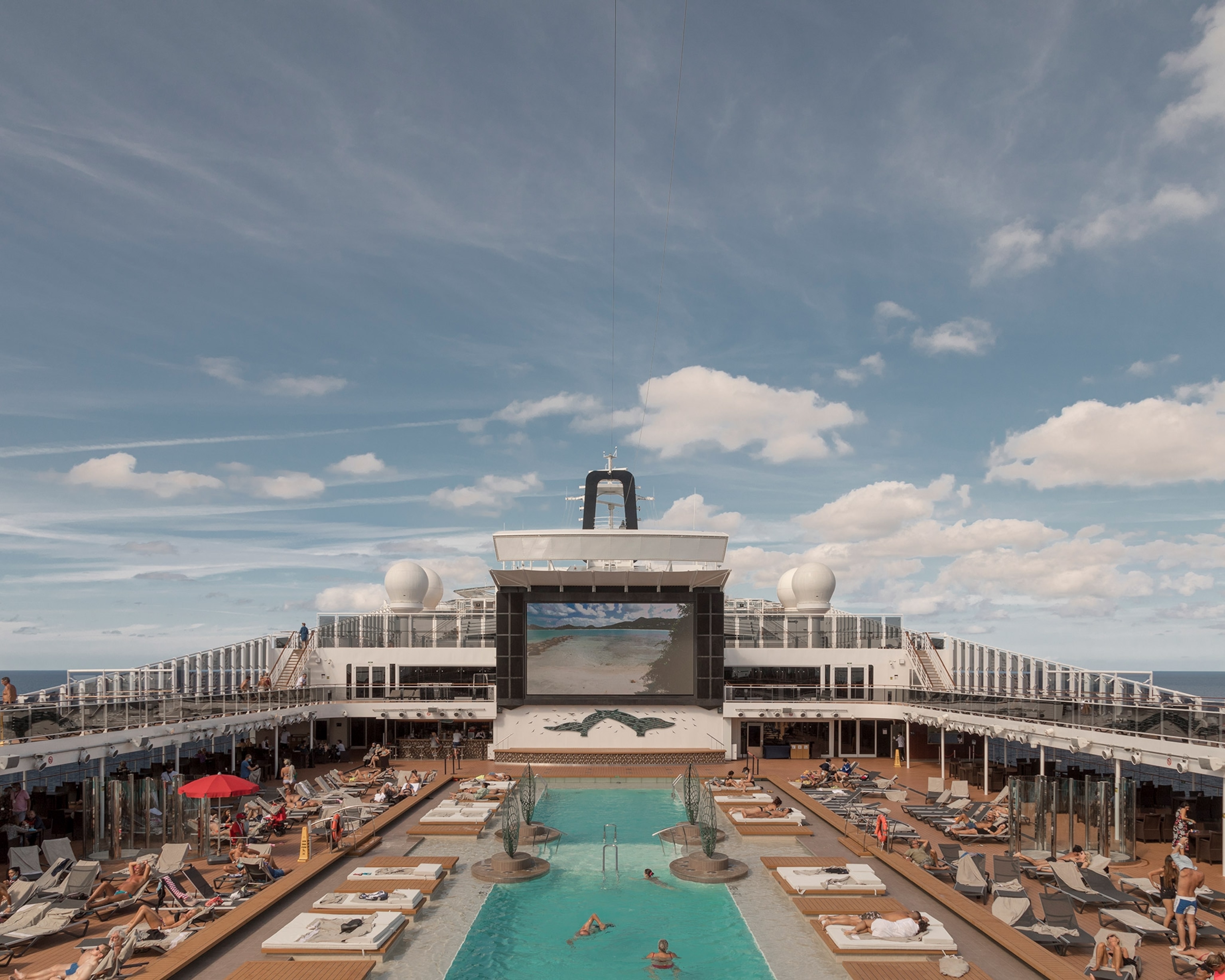

Cruise tech harnessed for safety
Over the past few years, cruise lines have invested in new technologies to streamline guest experiences. Royal Caribbean gives each passenger a snap-on electronic wristband that unlocks their stateroom door, facilitates cashless purchases, and pre-registers them for boarding. Princess Cruises’ similar OceanMedallion even enables guests to locate their family or friends around the ship.
“Now, those same technologies are being used to protect guests and crew through the pandemic,” said Gray Faust. “Things like electronic wristbands that were meant to deliver a more personalized experience are now capable of assisting with contact tracing.” The technology can also help crew staff identify if there are too many people gathered in one place and encourage them to spread out.
(Related: Will new travel technologies invade your privacy?)
In addition, paper menus have been replaced with scannable QR codes and facial recognition is being implemented at check-in. “The onboard experience [is] more contactless than ever,” said Gray Faust.
Some of the cleaning technologies the airline and hotel industries have harnessed during the pandemic are also being used, including improved air filtration systems, UV wands to sanitize common areas and cabins, and automatic handwashing stations.
How safe is it?
Despite all these precautions, the return to cruising hasn’t all been smooth sailing. Small outbreaks have been reported, including 41 crew members and 21 guests who tested positive on Norwegian cruise ship MS Roald Amundsen on July 31 and seven passengers who tested positive on Costa Cruises’ Costa Diadema on October 10. The Quantum of the Seas briefly confined 1,700 passengers to their cabins when a single case was detected onboard December 8; in the end, the ship returned to port early. River cruisers have also been exposed to the coronavirus.

These cases have stirred up memories of the nightmare scenario that plagued the Diamond Princess earlier in the year. The site of the largest COVID-19 cluster outside of Wuhan, China, the luxury cruise ship had all the trappings of a ’70s disaster flick. Passengers quarantined aboard for almost four weeks before they were allowed off. By then, the number of passengers and crew who tested positive for a new, potentially deadly coronavirus had jumped from 10 to more than 700; more than a dozen of those who caught the coronavirus died.
(Related: What happens when a cruise ship becomes a viral hot zone.)
In total, more than 40 cruise ships have reported COVID-19 positive cases among their passengers and crew as of May 2020. “Those cruise ships did not handle the crisis well,” said Dr. Arthur L. Reingold, division head of epidemiology and biostatistics at the University of California, Berkeley, School of Public Health. “No one was paying attention to any safety measures, which is why the virus spread so quickly.”
The SeaDream I—the first ship to resume sailing in the Caribbean—made headlines when seven guests and two crew members tested positive for COVID-19. The debacle has been blamed on the lack of a mask mandate onboard and the fact that passengers did not follow the pre-cruise 14-day quarantine requirement in Barbados. The inexpensive antigen tests administered by some cruise ships are not always reliable; false negative results may be as high as 50 percent, according to Science magazine.
(Related: Can testing and quarantining making travel during COVID safer?)
Even with the reported outbreaks, Chiron feels confident. “If I had the chance, I would have gone on a cruise months ago,” he said. “It’s a completely erroneous statement to compare ships to a petri dish.”
He’s not alone. When Royal Caribbean put out a call in November for volunteer passengers for a simulated voyage to test out safety protocols set forth by the CDC, more than 100,000 people signed up.
Epidemiologist Reingold maintains that if people follow the safety measures—social distancing, frequent handwashing, and proper mask wearing—the risk of exposure on a cruise ship is very low. However, he cautions that “safe is a relative term; nothing we do in life is absolutely safe.” One of the extra measures Reingold suggests is to avoid mingling with strangers in group activities and to only socialize with your cruise partner or immediate family.
Recent news of three potentially effective vaccines from AstraZeneca, Pfizer, and Moderna has been welcomed by the battered cruise industry. Stock prices for Carnival Corp., Royal Caribbean, and Norwegian surged almost 30 percent and bookings increased.
However, Chiron believes cruise lines need to resume operations without relying on vaccines. “No business should plan anything surrounding a magic antidote,” he said. “There are too many unknowns.”
“Having a vaccine available will likely be an added layer of safety and confidence for guests, but I wouldn’t be surprised if some of the new measures might continue even after the pandemic,” said Gray Faust. “Things like staggered embarkations and virtual muster drills also solve previous onboard pain points. Likewise, buffets with servers are perceived by many people as more sanitary. If measures deliver an enhanced and healthier experience, they could stick around.”
When will U.S. ships cruise again?
When the no-sail order issued by the CDC expired on October 31, 2020, U.S. cruise operators were given a framework for conditional sailing and COVID-testing requirements. Now that the CDC has elevated the travel warning for cruises to Level 4—the highest—no one can predict when cruise lines in the U.S. will start sailing again. The incoming Biden Administration might also want to implement new guidelines.
Whatever happens, travelers are eager to return to the seas. According to a recent Cruise Critic reader survey, 81 percent of U.S. cruisers will book a future cruise, and nearly half of respondents are already looking to book one, even if it won’t sail for months to come. “Bottom line: When the industry is ready to return safely,” said Gray Faust, “it will have cruisers ready to sail.”








































